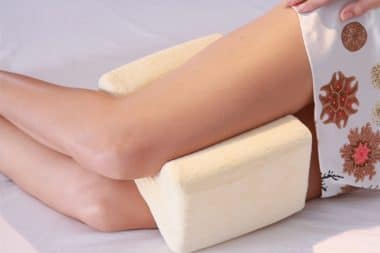Knee replacement surgery or knee arthroplasty will relieve pain and restore function in diseased and damaged knee joints. Your surgeon will cut away damaged bone and cartilage from your shin and thigh bones as well as remove your knee cap. Everything will be replaced with an artificial joint made from metal alloys, high grade plastics and polymers. Doesn”t sound too fun, but it will improve your quality of life.
Why Replacement Therapy?
If you have damaged your knee through sports or heavy activity or if you have joint and bone disease due to osteoarthritis or rheumatoid arthritis you will need to have your knees replaced. Those who have difficulty walking, climbing stairs and getting in and out of chairs or doing any activity that requires your knees to bend often need surgery to repair damaged and painful knees. Do your knees hurt when you are resting? This is a sign of a diseased knee.
What are the risks?
Knee replacement surgery carries the usual surgery risks that include:
- Blood clots in leg veins
- Heart attacks
- Strokes
- Nerve Damage
- Infection that includes temperature of over 100 °F, chills, drainage, tenderness and selling in the knees,
- Failure of artificial joints is a cause of concern. When subjected to daily stress and movement metal and plastic parts can wear out. If you place stress on the joins with high impact activities or you are obese or overweight your new knees will wear out quickly.
What are the surgical procedures?
An orthopedic surgeon is the expert on knee replacement procedures. Your medical history plus physical examinations and x-rays will determine the extent of the damage. Usually a surgeon recommends anesthesia and you can be given a general anesthesia or a spinal or epidural anesthesia. Knowing the surgeon is cutting away on your leg would be highly distressing; general anesthesia might be preferable.
The procedure involves keeping your knee in a bent position so the surfaces of the joint are exposed. An incision about six to 10 inches is cut and your surgeon cuts away damaged joints surfaces and removes your kneecap. After the joints are prepared, your surgeon attaches the pieces of artificial joint you need. Your knee will be bent and rotated to make sure the artificial parts function. Most knee replacement surgeries last about two hours.
How long is recovery?
Recovery will take several weeks and you may need to use crutches or a walker. Make sure you do not drive yourself home after the surgery and ask for help with cooking, bathing and laundry. Don”t vacuum, run, jump or chase after children. Create a living space on one floor. Avoid climbing stairs. Use safety bars or handrails in your shower or bath and make sure you have handrails along stairways. Use a steady chair with a firm seat cushion and back. Keep your foot elevated. You may need to use a toilet seat riser and do use a stable bench in your shower.
After surgery you will definitely have physical therapy and be encouraged to move your foot and ankle. This increases the blood flow to your leg and helps prevent swelling and clots. You may be prescribed blood thinners and asked to wear support hose. Do follow all your surgeon”s instructions concerning diet and exercise. Keep up on your physical therapy program.
What are the results?
Most knee replacement surgeries are highly successful if you follow instructions. You will eventually experience pain relief, improved mobility and be able to move without discomfort. It will take up to six weeks after your surgery to resume normal daily activities, but do take it easy. If you can bend your knees far enough to sit in a car you may be able to drive at the four week mark.
Walk, swim, or bike as often as you can. Avoid jogging, skiing, tennis and jumping. These types of high impact exercise will damage your new knee and surgery will be necessary again.
What are some exercises to strengthen knees?
Exercise to strengthen knees and improve flexibility. Exercises will increase your chances of long-term success with your new knee. Commit to a rehab plan and work with your physical therapist and surgeon to continually set exercise goals.
- Straight leg lifts strengthen the quadriceps in your thigh and help improve the stability of your knee joint. Rest on your back, keep your legs fully drawn-out. Lift your leg six inches from the ground and hold while lying flat on your back. Bend both ankles up and point your toes. Bend your ankles down and point your toes away. Swivel your foot clockwise and then counterclockwise while keeping your toes directed to the ceiling. This exercise circulates blood back to the heart and reduces swelling and the risk of deep vein thrombosis.
- High squeezes involve staying flat on your back and constricting the muscles in your thigh. Move the back of your knee to the floor. Hold for a count of five then relax. This exercise reduces swelling in your knee and helps build distal quadriceps strength. This is important for walking.
- While on your back, slide your leg out to the side and keep your kneecap aimed toward the sky. Slide your leg back to the beginning position. Do at least five times on each side. Your gluteus medius muscle is being worked and helps with pelvic stability while walking.
- Knee bending is important to get your new knees stable and strong. Sit in a chair and bend your leg until it is under the seat. Bend your knee back as far as possible. Hold for a count of five and then rest. Range of motion is being enhanced.
There are many more exercises you can use to work your knees. Spend at least fifteen minutes several times a day doing recommended exercises. As you increase your range of motion you increase your chances of a successful recovery. Keep walking outside your home at least three times every day. Extend your walk as you grow stronger.







